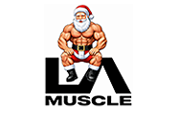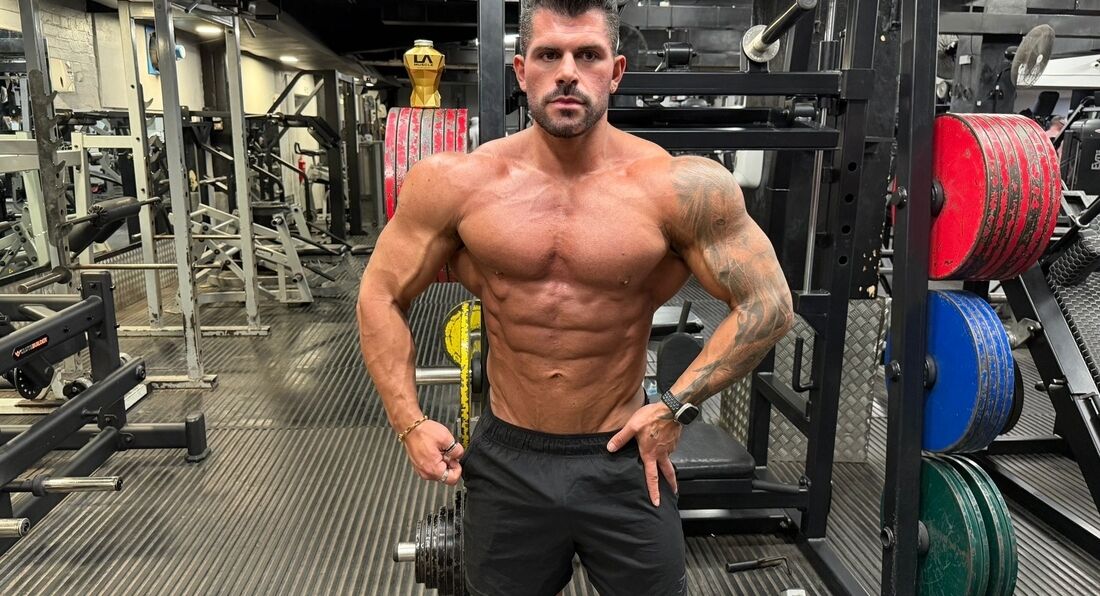The Knowledge > How To Build Muscle >
Sunday, 11th May 2025
How to Break Through a Muscle Growth Plateau
By LA Muscle on 11.05.2025 08:47 pm

Hitting a training plateau can be one of the most frustrating parts of a fitness journey. You’re putting in the work, lifting consistently, eating right—or so it seems—but your muscles just aren’t growing anymore. The good news? A plateau is not the end; it’s a sign that your body has adapted and it’s time to shake things up.
Here’s a detailed plan to reignite muscle growth and get your gains back on track.
1. Reevaluate Your Training Routine
Your muscles grow when they are challenged beyond their current capabilities. If your training has become repetitive, your body has likely adapted to it.
Try the following training changes:
-
Progressive Overload: Ensure you’re increasing the weight, reps, or intensity over time. Small weekly increments in load or volume stimulate hypertrophy.
-
Change Training Splits: If you’ve been doing a body part split (e.g., chest day, back day), try an upper/lower split or push-pull-legs routine to hit muscles more frequently.
-
Shock the System: Incorporate new techniques like drop sets, supersets, rest-pause sets, and eccentric (slow negative) training to surprise your muscles.
-
Time Under Tension: Focus on the tempo of your lifts. Slowing down the eccentric phase of a movement increases muscle activation.
-
Compound Focus: Exercises like squats, deadlifts, bench presses, pull-ups, and rows should form the foundation of your routine. These recruit multiple muscle groups and stimulate hormone production.
2. Fine-Tune Your Diet for Growth
Muscle growth demands not only consistent training but also the right fuel. Many lifters hit plateaus because they’re not eating enough or not eating smart.
Key nutrition strategies:
-
Caloric Surplus: Track your intake. You may think you're eating enough, but if you're not in a slight surplus, your body has no reason to build new tissue.
-
Protein Timing: Aim for 1.6–2.2g of protein per kilogram of body weight. Spread it evenly throughout the day, including post-workout.
-
Carbs for Recovery: Don’t fear carbs. They replenish glycogen, fuel training intensity, and support muscle recovery. Think sweet potatoes, rice, oats, and fruit.
-
Healthy Fats: Include fats like avocado, nuts, olive oil, and fatty fish. They support hormone production, especially testosterone, which is crucial for muscle building.
-
Supplements (optional but helpful):
-
Creatine Monohydrate: Proven to support strength and mass.
-
Whey Protein: Convenient way to hit daily protein goals.
-
Beta-Alanine, L-Citrulline, or pre-workouts: For endurance and intensity.
-
3. Strategic Recovery Is Key
Muscles grow outside the gym—during rest. Overtraining or poor recovery habits can lead to stagnation.
Recovery tips:
-
Prioritise Sleep: Aim for 7–9 hours per night. GH release peaks during deep sleep.
-
Rest Days: Don't train hard every single day. Schedule at least 1–2 rest days per week.
-
Active Recovery: Light activities like walking, yoga, or stretching enhance blood flow and recovery.
4. Reset Your Mindset
Plateaus are as much psychological as they are physical. If you’re mentally drained or unmotivated, your effort—and results—will suffer.
Mental hacks to stay sharp:
-
Set New Micro Goals: Instead of just "get bigger," aim to add 5kg to your squat or 2 reps to your pull-ups. Small wins build momentum.
-
Log Everything: Keep a training and nutrition journal. Seeing progress (even small) reinforces consistency.
-
Visualisation: Spend 2–3 minutes daily visualising your workouts, feeling the muscles contract. Many elite athletes use this to reinforce neural pathways.
-
Train With Intent: Don’t just move weights—focus on the contraction, the stretch, and quality over quantity. Mind-muscle connection is real.
5. Take a Deload or Try a New Discipline
Sometimes, stepping back is the best way forward. If you’ve been pushing hard for months, a deload week (reduced volume/intensity) can let your body supercompensate and come back stronger.
Alternatively, trying a different physical discipline—like Olympic lifting, calisthenics, or CrossFit—can spark new gains by challenging muscles in unfamiliar ways.
Sample Plateau-Breaking Workout (Push Day Example)
-
Barbell Bench Press – 4 sets of 6 reps (heavy, focus on progressive overload)
-
Incline Dumbbell Press – 3 sets of 8–10 reps
-
Dips (weighted if possible) – 3 sets to failure
-
Overhead Barbell Press – 4 sets of 6–8 reps
-
Lateral Raises Superset with Front Raises – 3 sets of 12
-
Push-Ups with Tempo (3s eccentric) – 2 sets to failure
A plateau isn’t a failure—it’s a sign of progress. You’ve built a solid base, and your body is asking for a new challenge. By adjusting your training, dialing in your diet, taking recovery seriously, and refreshing your mindset, you can blast through the plateau and start growing again.
Remember: Growth comes from doing what’s uncomfortable. Keep pushing, stay consistent, and trust the process.





























